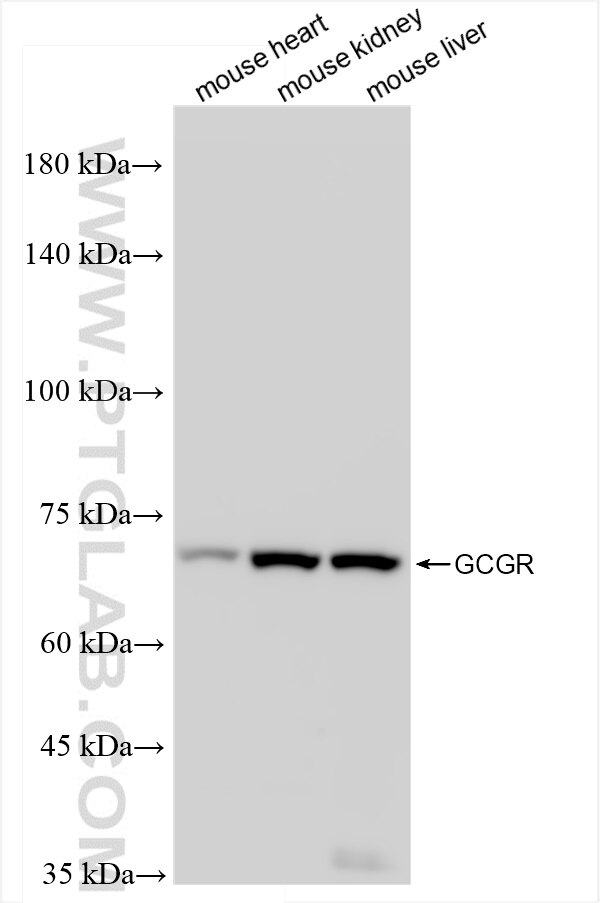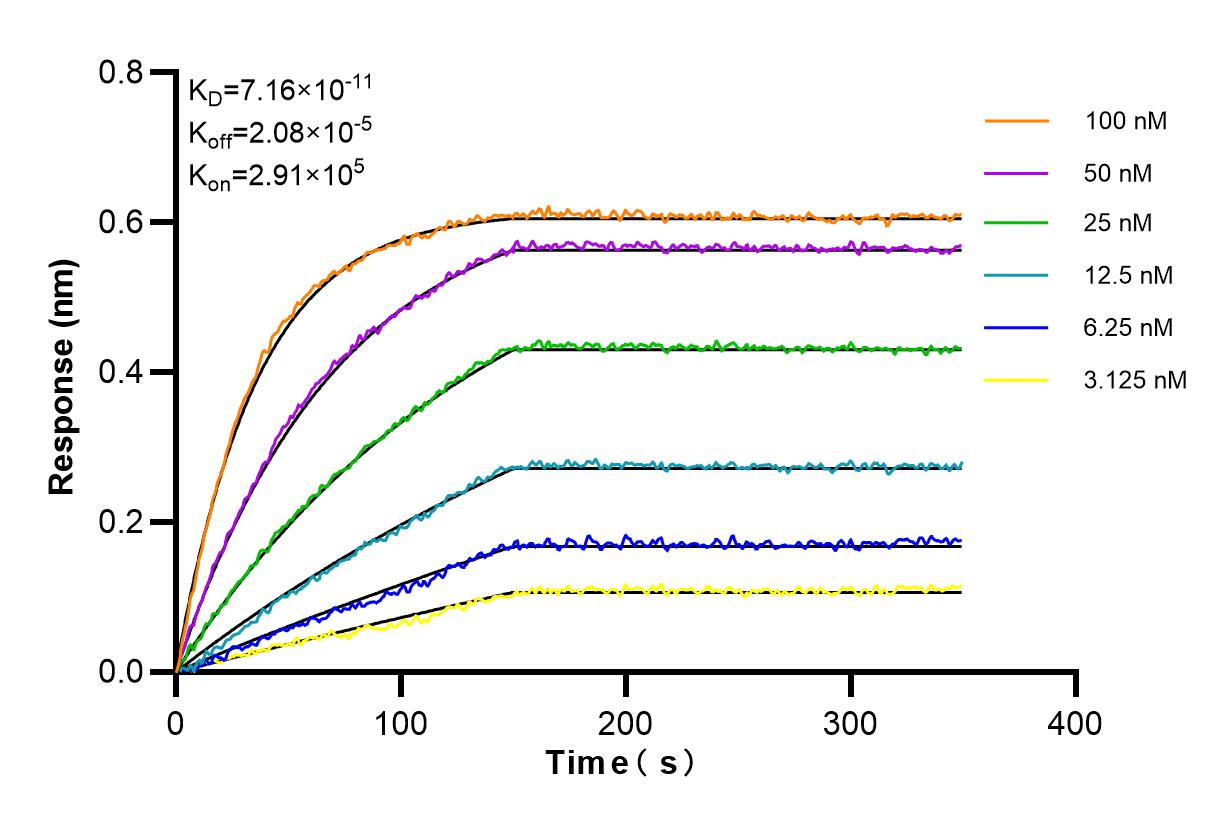Validation Data Gallery
Tested Applications
| Positive WB detected in | mouse heart tissue, mouse kidney tissue, mouse liver tissue |
Recommended dilution
| Application | Dilution |
|---|---|
| Western Blot (WB) | WB : 1:5000-1:50000 |
| It is recommended that this reagent should be titrated in each testing system to obtain optimal results. | |
| Sample-dependent, Check data in validation data gallery. | |
Product Information
84237-5-RR targets GCGR in WB, ELISA applications and shows reactivity with human, mouse samples.
| Tested Reactivity | human, mouse |
| Host / Isotype | Rabbit / IgG |
| Class | Recombinant |
| Type | Antibody |
| Immunogen | GCGR fusion protein Ag24861 相同性解析による交差性が予測される生物種 |
| Full Name | glucagon receptor |
| Calculated molecular weight | 477 aa, 54 kDa |
| Observed molecular weight | 62-68 kDa |
| GenBank accession number | BC104854 |
| Gene Symbol | GCGR |
| Gene ID (NCBI) | 2642 |
| Conjugate | Unconjugated |
| Form | Liquid |
| Purification Method | Protein A purfication |
| UNIPROT ID | P47871 |
| Storage Buffer | PBS with 0.02% sodium azide and 50% glycerol , pH 7.3 |
| Storage Conditions | Store at -20°C. Stable for one year after shipment. Aliquoting is unnecessary for -20oC storage. |
Background Information
Glucagon receptor (GCGR) is a secretin-like (class B) family of G-protein coupled receptors (GPCRs). It plays an important role in elevating the glucose concentration in the blood and has thus become one of the promising therapeutic targets for treating type 2 diabetes mellitus (PMID: 26236379). GCGR is a 62-kDa glycoprotein that contains at least four N-linked oligosaccharide chains (PMID: 2174441; 15245877). Defects in the gene of GCGR cause non-insulin-dependent diabetes mellitus (NIDDM).
Protocols
| Product Specific Protocols | |
|---|---|
| WB protocol for GCGR antibody 84237-5-RR | Download protocol |
| Standard Protocols | |
|---|---|
| Click here to view our Standard Protocols |

